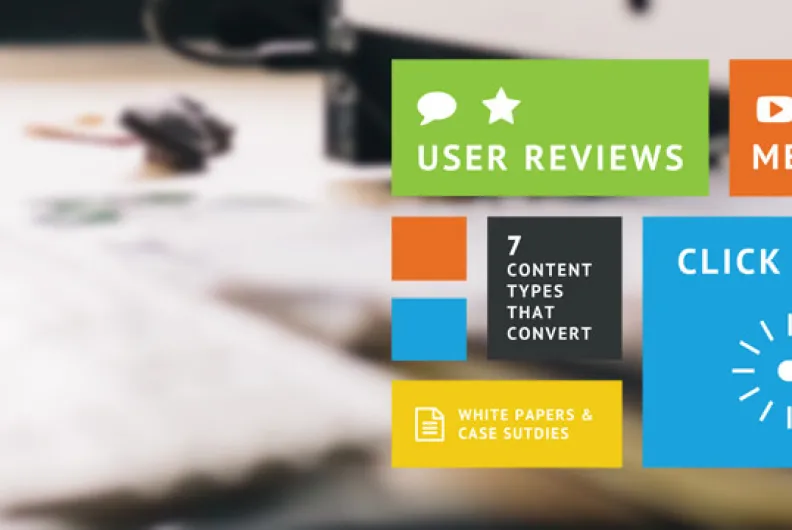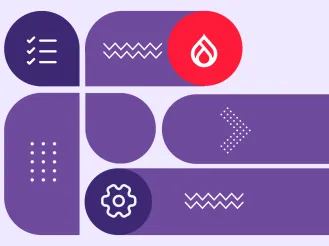7 Meaningful Content Types That Can Improve Conversion Rates
This article was last updated in January 2022.
An active content strategy and digital marketing plan is powering many successful websites. This means fresh relevant content is being regularly produced, and strategically delivered to numerous audiences across multiple platforms.
Delivering the right content, at the right time, to the right audience, where ever they are and on their preferred platform increases brand-awareness, showcases through-leadership and drives conversions. This blog post explores 7 unique content types to support your content strategy and tips for using them.
1. Product and Service Descriptions
Unique product and service descriptions can help to enhance the visibility of your product pages and they present an opportunity to flex your creative (and strategic) writing ingenuity. Product descriptions play a key role in helping to convert web traffic into buying consumers by:
- communicating value,
- influencing “buyer” decisions, and
- increasing conversions.
Every now and again, we come across an eCommerce site underestimating the importance of delivering compelling descriptions written with goals and intent in mind. These sites usually feature heavy amounts of specialized or technical language (perhaps copied from the manufacturer's site) in their product descriptions.
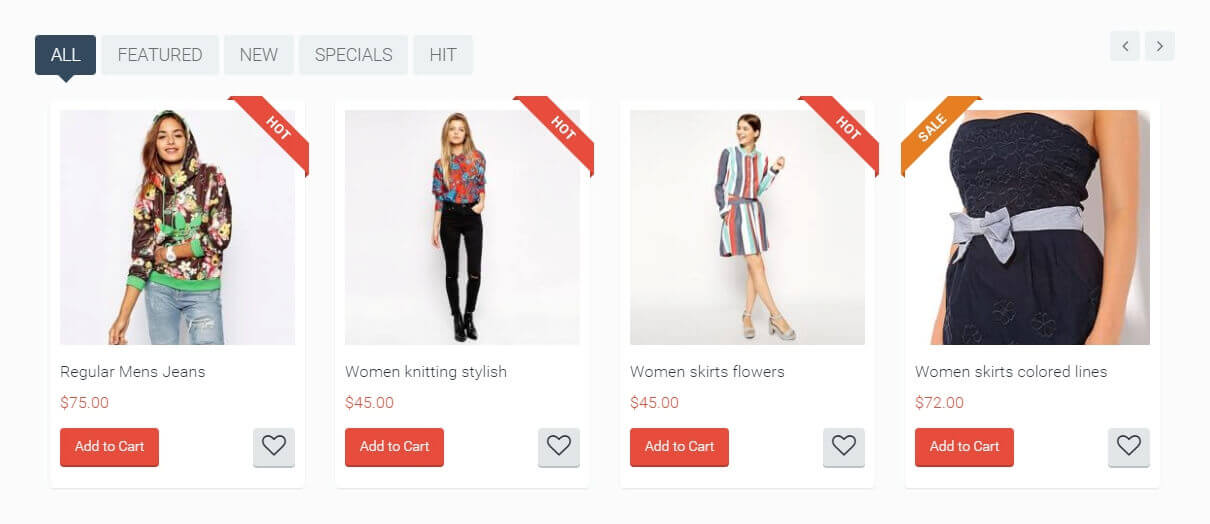
The major difference between “technical features” and “product descriptions” will be your writing style and intent - remember product descriptions should be alluring and persuasive. A great alternative for displaying highly technical features is moving this content to a “Technical Features” or “Technical Specifications” section, thereby freeing up valuable digital real-estate to persuade consumers.
How To Use: Product Descriptions
- Highlight the practical benefits of your product.
- Avoid over-using specialized language.
- Speak to your audience with an active voice.
- Aim to compel buyers into opt-in consumers.
To maximize value: define your buyer personas including their motivations - you may have more than one. Knowing and writing for specific audiences can achieve greater buy-in. For tips on personalizing content, check out our blog: Exploring Web Personalization Strategies for Higher Education Websites.
The idea of product descriptions can transcend across multiple industries. For example, higher education institutions can apply these descriptions to campus bookstores, school stores, ticketing and event pages, university surplus stores, even donation pages in some cases.
2. Client / Customer Testimonials and Stories
Testimonials are powerful - digital marketers refer to it as “social proofing” and they’re the driving force behind most buying decisions. This goal-converting content type has the ability to strengthen brand credibility and buyer security. In fact, a recent survey conducted by Dimension Research on behalf of Zendesk reports 90% of customers say their buying decisions are influenced by online reviews.
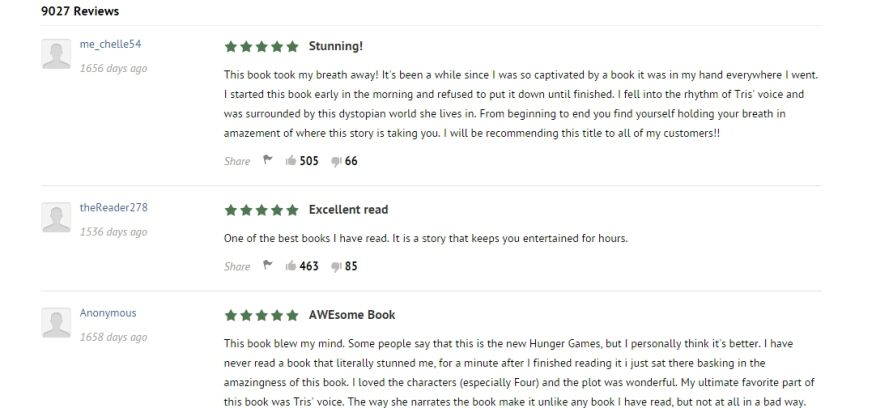
Many successful websites deliver product reviewing functionalities directly on commerce pages. Businesses like Amazon, Target, and Barnes and Noble are leveraging community-based user reviews to help influence others into purchase decisions. The best part is the companies receive invaluable product feedback from diverse audiences.
HOW TO USE: Customer Reviews
Persuasive reviews and customer stories can be one of the most powerful ways to connect with your prospects. Truly effective testimonials are more than a few shared quotes - they communicate value, drive conversions and generate brand authority. To curate persuasive testimonials, consider asking your customers and or clients to:
- Provide product and service testimonials with mission-critical details including any unique selling propositions in their reviews.
- Share their specific use-case stories and how your product or service provided stronger returns on investment (ROIs).
- Get permission - always ask for permission to use client testimonials, quotes, logos etc. To maximize your authority, have clients state their credentials.

3. Tutorials and How-To Guides
How many times have you looked to Google or Bing to search for simple how-to or do-it-yourself guides for anything from everyday tasks to more advanced queries. There’s no doubt that tutorial-driven content is widely consumed online as it helps consumers gain context and maximizes product and service value.
HOW TO USE: Informative Guides
Tutorials and how-to guides come in several formats so experiment with different types and determine which performs the best - be sure to consider your audience through voice and tone throughout your writing. Here are four high-performing content formats to consider:
- Video Tutorials and Explainer Videos: video are immersive and tend to work best but they can be costly for high quality video production.
- Infographics and Presentations: infographics do more than share information, they tell a visual story and motivate users. Data, color scheme, and narrative will help to empower your messages.
- Blog and Editorial Posts: publish how-to guides in blogs and extend your reach by sharing your post through social channels and email campaigns.
- Community and Group Forums: with ongoing community development, forums help take the pressure off internal support staff, etc.
In Higher Education: a great way to leverage tutorials and how-to guides is publishing blogs that directly address any student-related topics or interests. Here's a few to get you started:
- How to apply for tuition or financial aid and make your contact information accessible to readers who might have follow up questions.
- How to get started with your first day, week, or month on campus. If a month is important to your prospective students, deliver the message in a series-style blog.
- How to navigate the campus - an interactive map with building and school locations, or campus video make excellent blog assets.
4. Case Studies and White Papers
Case studies and white papers are an enormously popular content marketing tools because they offer a more professional, success-driven approach to demonstrate products, services and brand value.
Case studies generally focus on the experience of one customer and successful use-case outcomes. White papers on the other hand, offer new solutions to an existing problem or showcases benefits and features of products and services (popular in B2B markets).
HOW TO USE: Case Studies & White Papers
Case studies are usually published later in sales cycles and generally require less research so they’re easier to publish. Case studies are story-driven and should help to nurture your inbound prospects. Empower your messages by including your brand’s voice and tone throughout your writing.
White papers can be published earlier in sales cycles and require more research time to gather and validate product and service data. White papers are a great way to generate new leads, continue prospect nurturing, and convert buyers who may doing some comparative shopping.
5. FAQs & Help Centers
Users visiting "Help Center" and Frequently Asked Questions (FAQs) pages should be engaged. These folks likely have product-related questions in mind and they're searching for more details about your products. This is valuable opportunity to weave strategy into your your FAQ pages and funnel conversations towards purchases.
HOW TO USE: FAQs & Help Centers
An effective FAQ page should be a set of questions your actual customers and prospects will likely ask, and not a collection of random questions followed by dry answers. Keep your FAQ page(s) organized into clear categories so users can easily find what they’re looking for. To maximize value, include links to relevant products or service, and explore user-friendly navigation and layouts.
For Comprehensive and Technical FAQ Pages: Some sites will have highly technical FAQs or just a lot of user question to answer. In these cases, language clarity and content organization are key. Think about grouping similar questions into “categories” and putting them at the top your page.
If you’re considering layout options, horizontal and vertical tabs and accordions are an excellent, user-friendly option. They help organize information into clear categories and the added value - this layout-type can be responsive, so messaging can be beautifully translated into mobile environments.
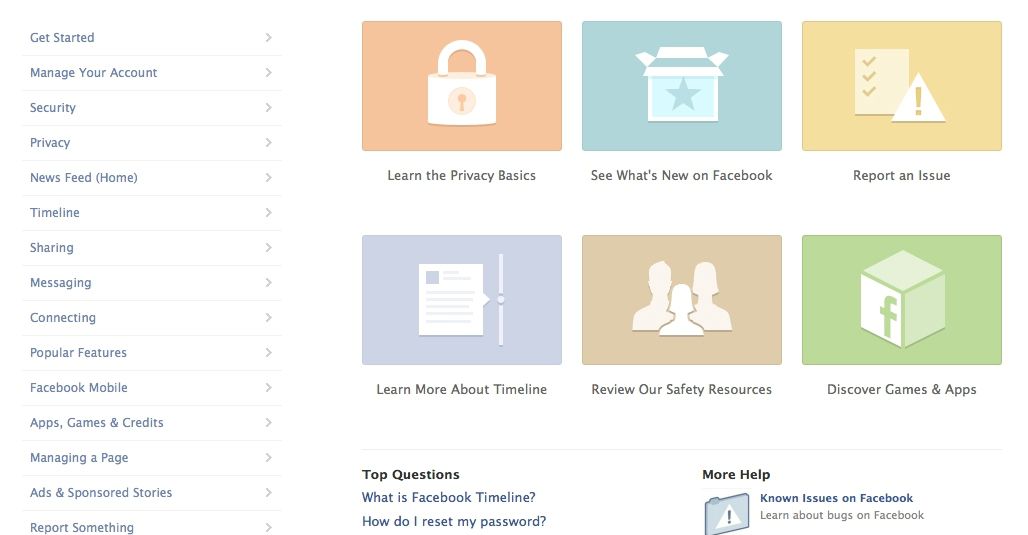
6. Video and Other Multimedia
Written content is an essential part of any content strategy or digital marketing plan. However, people are naturally visual, and immersive content such as video and other multimedia types bring in near immediate engagement returns. Video helps to bring people deeper into stories and the conversions can be high when implemented with best practices in mind.
HOW TO USE: Video & MultiMedia
- Start with your audience and localize multimedia content when and if you can.
- Lead with a relatable story and deliver value up-front and center.
- Extend your reach and share inviting clicks across all social channels.
7. Localized (Geo-Targeted) Landing Pages
If your business serves specific geographic areas, localized or geo-targeted landing pages (service area pages) can increase affinity and conversions. Localized landing pages identify user’s locations by IP address or WiFi and GPS data then content based on that location is delivered. Locations can be a large as countries all the way down to regions, provinces, states, cities, towns and more.
Localized landing pages are extremely useful for local search engine optimization (SEO) and provide opportunities to deepen relationships with target audiences. By showing that you’re in touch with consumer needs and providing more relevant, localized content, you have a stronger chance to generate conversions.
HOW TO USE: Localized landing Pages
Some businesses take shortcuts by recycling the same content - rewriting a little here and there. The most successful geo-targeted landing pages actively target and deliver localized content to the specific region or community it operates in. Here’s a few tips if you’re considering localized landing pages to deliver content by location:
- Include local contact information with link back to the primary or headquarter site.
- Segment target markets and define buyer personas to maximize content value.
- Align the page copy, including voice and tone, to the user’s country or region.
- Consider conversion testing to determine how your localized landing page performs.
Final Thoughts
We hope the seven content formats and tips shared throughout this blog provide some new content delivery ideas. It's important to prioritize end-to-end content and user experience to better influence the purchasing decisions of your key audience types. A solid content strategy plan weaved into the content your produce, publish, and distribute adds layers value towards business goal conversions.
Remember to empower your content efforts by putting a strategy behind your content and delivering messages to the right audiences using the best formats. If you have questions about this article or, you’d like get in touch, connect with us here or share your comments below.
